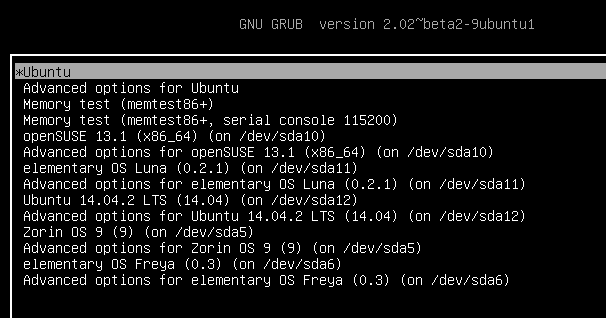The easiest method, just burn the ISO you downloaded to a disc, and boot from it. At that point this is no different than using a 'regular pc'. Adobe acrobat pro serial number free for mac.
I’m (desperately) try to install Ubuntu 18.04 64 bit (mini.iso) but I fail in each and every attempt. This is due to the 32 bit BIOS and 64 bit CPU which seems to confuse the installer. Until now, I only was able to install a 32 bit Ubuntu 16.04 but I’d like to “upgrade” to a 64 bit base. Select an image Install/live DVD. The combined install/live DVD allows you either to install Ubuntu permanently on a computer, or (by entering 'live' at the boot prompt) to try Ubuntu without changing your computer at all.
Ubuntu 16.04 Mini Iso
This in depth guide will take you every step of the way through installing Ubuntu Linux on your Mac, by way of VirtualBox – a free and outstanding program.

Markus in the comments above got Ubuntu 16.04 LTS going on both his MacBook 2,1 and iMac 5,1 with an external USB optical drive. He had some troubles with other *buntu images. Note that he wasn’t specific about the process he used, but mentioned rEFInd and I don’t know whether that was integral to the success or not. Nathan Hanson in the comments above got Elementary Freya going via an external USB optical drive. Process was creating an empty bootcamp partition, restarting with CMD-ALT, then it loaded the disk and he was able to continue.
I’m sorry I’m not into gaming or shopping at Amazon, I’d be sure to make a donation if there were an easy way to do that. Thank you so much. All of these 32-bit EFI models.
Or Can you help me get Linux Mint or Open SUSE on it?!?! Or OSMC or Android or a Iatkos Hackintosh if your a genius!!!lol!!! Just wishful thinking maybe but great work!!! This is something you’ll have to look around a bit for – distro support for the old powerpc stuff is pretty hit and miss these days, and creating a PPC installer isn’t quite as simple as the little C program here. If you just want a newer version of Ubuntu-*something*, some of the derivatives seem to have support ( has a desktop powerpc iso for Ubuntu MATE). I believe Ubuntu still caries updated server images for PPC also if you’re willing to try installing the server and then manually installing a desktop environment from the command line. As for Mint or openSUSE, if a couple searches don’t come up with anything, you could ask in their respective support forums (or on reddit).
Kindle for mac 10.6.8. You can get more info. If you choose not to update your Internet Explorer settings, to continue to visit Optimum.net with the outdated display settings.
3) I'm not able to create either a bootable USB (not visible) in the bootmenu so I'm burning quite some CD's here (no RW). Anyone that can help me with a guide or procedure how to get Ubuntu (mini or server) installed on this MacMine?
I have a mac mini mid 2012, with a CPU P8800 and a graphic card nvidia geforce 320M. I used on it the Ubuntu 10.10, with the proprietary driver nvidia, which run very well in bios emulation mode. Recently I've installed the 12.04 version. To do it, I used the alternate distribution and installed it in the bios emulation mode. After the installation I passed to the kernel, on the command line, “nomodeset reboot=noacpi”, because it was impossible to use the driver “nouveau”.
I have liberated an old 2006 Mac Mini (Model: A1176) from being thrown away and wanted to use it as a Time Capsule for my other Macs. To do this, I want to install Ubuntu server 16.04 LTS to roll my own Time Capsule over my home network. How can I do this? I have downloaded the ISO from Ubuntu's website but when I put it onto a CD-RW and selected it by holding down Option at boot, it then got stuck on the message 'Select CD-ROM Boot Type' with no way to select it (keyboard wasn't loaded). Can someone please provide step-by-step on how to do this?
Samba provides file and print services for various Windows clients and can integrate with a Windows Server domain, either as a Domain Controller (DC) or as a domain member. So in this article we are using in Per-to-Per network between Windows clients and Linux Ubuntu clients. If you don’t like reading then watch the at the end of this post.